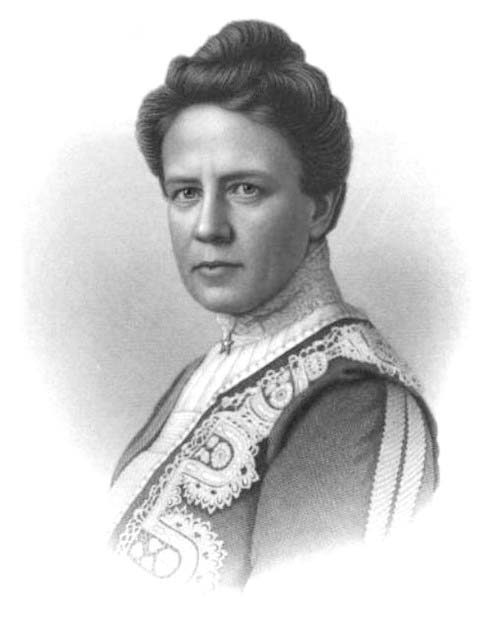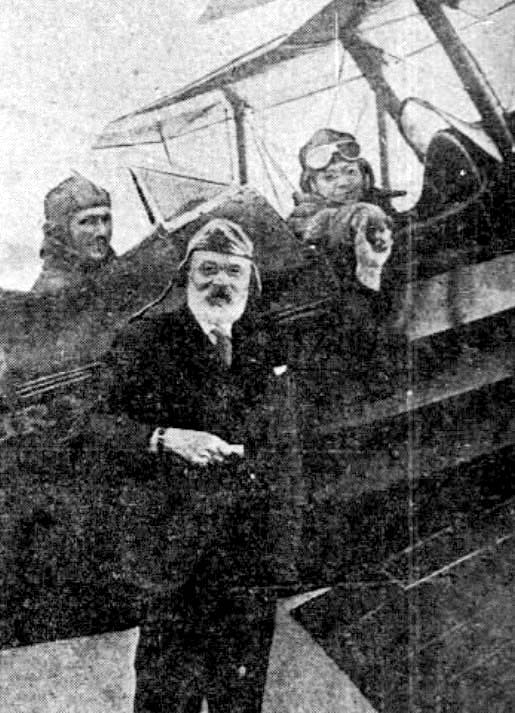Frances Dickinson, MD, 1856-1945
By Emma Florio, Archives & Research Specialist
Frances Dickinson was born in Chicago in 1856 to Quaker parents from Massachusetts. Her mother Ann Anthony Dickinson helped to found the first Quaker congregation in Chicago and was the aunt of suffragist Susan B. Anthony. The ninth of ten children, Dickinson attended schools in Chicago and worked as a teacher for four years after graduating from high school.
 |
|
Portrait of Dickinson from A Group of Distinguished Physicians and Surgeons of Chicago, 1904.
|
In 1878, Dickinson made the pivotal decision to attend a course of physiology lectures at the Woman’s Medical College of Chicago given by Sarah Hackett Stevenson, MD, an 1874 graduate of the school that would eventually become Northwestern University Woman’s Medical School. Dickinson hoped to learn enough to teach the subject. Instead, after a year of these lectures, she decided to take a complete course in medicine and become a doctor herself. To that end, in 1880 she enrolled at the Woman’s Medical College and graduated with honors in 1883.
After completing an internship at Chicago’s Women’s and Children’s Hospital, Dickinson chose to specialize in ophthalmology. She took a course at the Illinois State Eye and Ear Infirmary in Chicago, but this was not a thorough enough education for her. She spent the next 14 months traveling through Europe with her younger brother Charles, visiting the UK, France, Sicily, Switzerland and Germany. She used this time to train at the Royal Ophthalmic Hospital and the Royal Free Hospital in London and to receive private tutoring from prominent German ophthalmologist Adolf Weber in Darmstadt, Germany.
Upon returning to Chicago in 1885, Dickinson set up a private practice and quickly became a leading ophthalmologist in the city. In addition to this practice, she was an instructor at the Chicago Post-Graduate Medical School and an ophthalmic surgeon at Women’s and Children’s Hospital. Her leadership roles included acting as Secretary and then President of Harvey Medical College, a co-educational night school, where she was also on the academic faculty. This prominence in the medical community led to her becoming the first woman invited to the International Medical Congress, a series of scientific conferences that were held in various locations around the world, in 1887.
Dickinson used her prominent position to help others and to advocate for women’s rights, following in the footsteps of her Quaker ancestors and her cousin Susan B. Anthony. In 1889 she helped organize the Illinois Medical Women’s Sanitary Association in response to the devastating Johnstown Flood that killed over 2000 people in central Pennsylvania; women from this organization, including many Women’s Medical College alumnae, became some of the first relief workers to arrive on the scene. Her position in Chicago society also led to heavy involvement in the World’s Columbian Exposition held in the city in 1893. She was a member of the Board of Lady Managers, which had “general charge and management of all the interests of women in connection with the Exposition.”¹ She also helped to organize the Queen Isabella Association, the primary purpose of which was to erect a statue of the Spanish queen at the Exposition, but which also advanced the cause of women’s suffrage and equal rights.
 |
|
71-year-old Dickinson (right) says goodbye to her brother Charles before flying home to Florida from Chicago. From the Chicago Tribune, June 4, 1927.
|
Due to failing health from overwork, Dickinson retired from medicine and moved to Orange City, Florida, in 1906. This did not stop her advocacy work, though. In 1923 she attended the National Woman’s Party conference in Seneca Falls, New York, where she seconded a motion to propose an Equal Rights Amendment that would explicitly prohibit sex-based discrimination. She continued to support women’s equality in more unusual ways as well: she had an airstrip built near her Florida home in 1931 that was to be used exclusively by women. This love of aviation ran in her family. Her younger brother Charles was the president of the Aero Club of Illinois for 21 years. Frances was also a board member of the club and in 1927, at age 71, she made national news after flying as a passenger in an open-cockpit plane from Daytona Beach to Chicago for an Aero Club meeting, traveling over 1000 miles in 12 hours.
Frances Dickinson died in Orange City in May 1945, at age 89. Her name lives on in Orange City in the Dickinson Memorial Library as well as in many historical sites where she donated money. As Nathan Smith Davis, Sr., a founder of what became the Feinberg School of Medicine and a prominent member of the 19th century medical community, noted in a 1903 letter, she was “one of the most industrious, intelligent and successful female practitioners and teachers of medicine in this country.”²
Endnotes
1. Official Manual of the Board of Lady Managers of the World’s Columbian Exposition (Chicago: Rand, McNally & Company, 1891), 30.
2. F. M. Sperry, compiler. A Group of Distinguished Physicians and Surgeons of Chicago (Chicago: J. H. Beers & Co., 1904), 153.
Selected References
Beatty, William K. “Frances Dickinson—Ophthalmologist and Flier.” Proceedings of the Institute of Medicine of Chicago 38 (1985): 10-15.
Updated: March 28, 2024